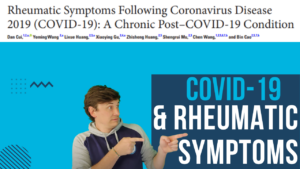Intro
Imaging in Rheumatology is a vital modality in assisting with the diagnosis and ongoing monitoring of the conditions. This blog begins another series of blogs which will aim to unpack imaging in Rheumatology from the perspective of Physiotherapists. It is clearly important that we utilise the imaging appropriately but also understand where our role lays in ensuring appropriate patients reach Rheumatologists in a timely fashion.
This initial blog will run as an overview to the imaging and follow-up blogs will unpack in more detail for specific conditions. For the purposes of simplicity, we will be assuming that the attending patients are clear for red flag pathology.
As usual feedback is greatly appreciated and any further reading for me please send it my way!
PLEASE REMEMBER – THIS BLOG IS NOT A REPLACEMENT FOR CLINICAL REASONING, IF YOU ARE UNSURE GET ADVICE
Where Physio’s fit with imaging
There is an ever-expanding set of roles for physiotherapists these days with an increasing level of patient complexity and our responsibility continues to escalate. First Contact Practitioners are seeing more and more patients without medical screening and the ability to refer for imaging has been a necessary skill to acquire. Other physios may not have the option to refer for imaging but are still in a position to recommend as appropriate following assessment if they believe their patient to have a rheumatological condition. Then of course we get to those clinicians who have trained in Diagnostic Ultrasound actually scanning patients and reporting on those scans!
I believe the decision on a physio’s part to image a patient in the context of Rheumatology is slightly more complex than a cursory glance might elicit. As we will explore in further blogs false positives and negatives are a possibility and imaging is far from diagnostic in isolation. I would council the following:
If suspecting a rheumatological condition refer to Rheumatology. If imaging is available for you to request and you are confident in selecting the correct modality then I would advocate organising it. I do not believe the referral to Rheumatology should be dependent on the result of that imaging, the request should be concurrent.
To clarify – The Rheumatology referral should be based on clinical suspicion NOT dependent on the outcome of an imaging modality.
Imaging Modalities and their role
MRI – mostly used in axial conditions to look for evidence of inflammatory changes in the sacroiliac joints (sacroillitis) and the spine. Specific sequences are required to detect the inflammatory lesions typical of Axial Spondyloarthropathy. It is recommended to image the whole spine and the sacroiliac joints.
Diagnostic ultrasound – mostly used for the detection of synovitis and tenosynovitis in the peripheral manifestations of the rheumatological conditions, it also has a role in imaging peripheral enthesopathy. Following diagnosis it can often be used as a monitoring tool, some patients will achieve clinical remission but retain subclinical synovitis which requires appropriate medical management.
X-ray – previously used in the diagnostic stage of Axial SpA specifically looking at bone changes along the joint line of the SIJs (sclerosis and erosions) or changes in the spine (squaring of the vertebrae, syndesmophytes and joint fusion). Since the widespread availability of MRI this has become far less utilised. More commonly it is now used to visualise joint erosions in the peripheral manifestations of Rheumatological conditions.
Other imaging – CT scan can be used in a similar fashion (much less commonly) to MRI and DEXA scans for determination of bone density in Osteoporosis.
Further blogs
As mentioned in the intro I will look to unpack MRI and diagnostic ultrasound in further blogs to provide more guidance on what to order for the Rheumatological conditions.
As usual thanks for reading and don’t forget to check out my other blogs. Sign up for the Rheumatology.Physio newsletter for further resources and updates!
Related Blogs
An Introduction to Rheumatoid Arthritis for Therapists
Inflammatory Arthropathy Bloods
References
Robinson, P.C., Sengupta, R. & Siebert, S. Non-Radiographic Axial Spondyloarthritis (nr-axSpA): Advances in Classification, Imaging and Therapy Rheumatol Ther (2019).
Alexander N. Bennett, Helena Marzo-Ortega, Amer Rehman, Paul Emery, Dennis McGonagle, on behalf of the Leeds Spondyloarthropathy Group; The evidence for whole-spine MRI in the assessment of axial spondyloarthropathy. Rheumatology (Oxford) 2010; 49 (3): 426-432.
Iustina et al, Structural damage in rheumatoid arthritis: comparison between tendon damage evaluated by ultrasound and radiographic damage Rheumatology 2016;55:1042:1046
Sahbudin et al, The role of ultrasound-defined tenosynovitis and synovitis in the prediction of rheumatoid arthritis development. Rheumatology 2018;57:1243-1252


